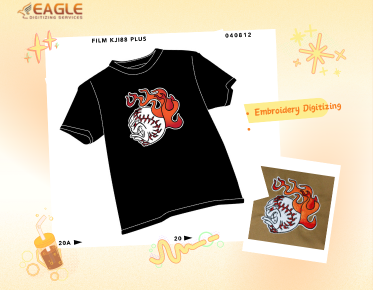The Best Quality Embroidery Design Format
Embroidery is a timeless art form that has evolved significantly with the advent of technology. Today, choosing the right embroidery design format is crucial for achieving the best quality results. With numerous formats available, each serving different purposes and machines, it becomes essential to understand which format suits your needs best.
One of the most popular formats is the DST format, widely used in commercial embroidery machines. This format is favored for its compatibility and efficiency in handling complex designs. However, when it comes to personal or smaller-scale projects, the PES format is often preferred due to its versatility and ease of use with home embroidery machines. Understanding the differences between these formats can significantly impact the quality of your embroidery digitizing projects.
Understanding Embroidery Design Formats
Embroidery design formats are essentially digital files that contain the instructions for embroidery machines to stitch designs onto fabric. These files dictate the stitch type, color changes, and other essential parameters. The choice of format can affect the final output, making it crucial to select the right one for your specific machine and project.
DST Format
The DST format, developed by Tajima, is one of the most widely used formats in the embroidery industry. It is known for its simplicity and reliability, making it a staple for commercial embroidery businesses. The format is compatible with most industrial machines, ensuring seamless operation and high-quality results.
PES Format
The PES format, primarily used with Brother and Babylock machines, is popular among hobbyists and small business owners. It offers a user-friendly interface and supports a wide range of design complexities. The format is also compatible with various embroidery digitizing software, allowing for easy customization and editing.
Choosing the Right Format for Your Needs
When selecting an embroidery design format, consider the type of machine you are using and the complexity of your design. For commercial purposes, the DST format is often the best choice due to its widespread compatibility and efficiency. On the other hand, if you are working on personal projects or using a home machine, the PES format might be more suitable.
Additionally, consider the software you are using for embroidery digitizing software. Some software may offer better support for certain formats, providing more features and flexibility in design creation and editing.
Conclusion
In conclusion, the best quality embroidery design format depends on your specific needs and the equipment you are using. Both DST and PES formats offer unique advantages, catering to different segments of the embroidery industry. By understanding the strengths of each format, you can make informed decisions that enhance the quality and efficiency of your embroidery projects.
For those seeking professional assistance, Eagle Digitizing excels in providing professional embroidery digitizing services, ensuring every design is crafted with unmatched precision.
.png)


